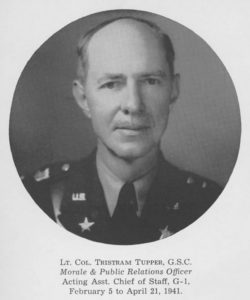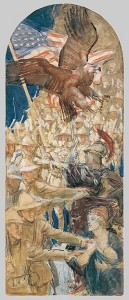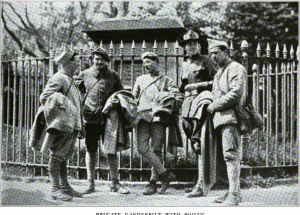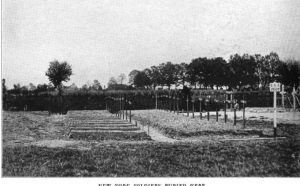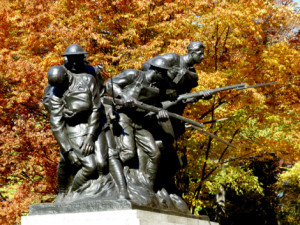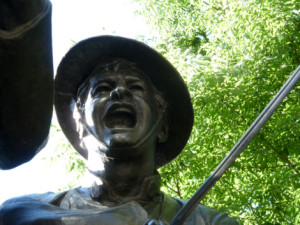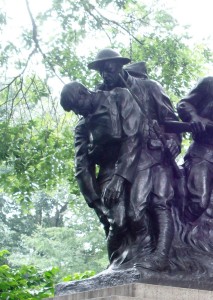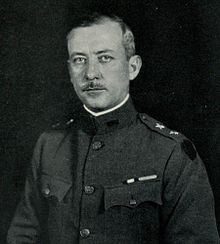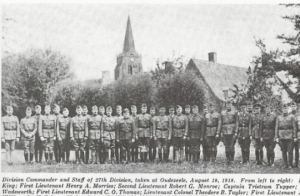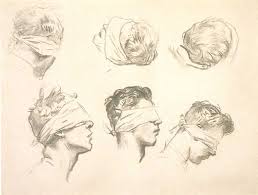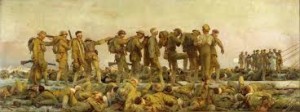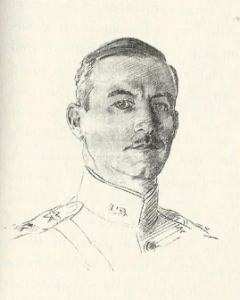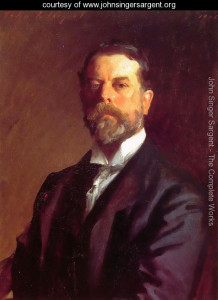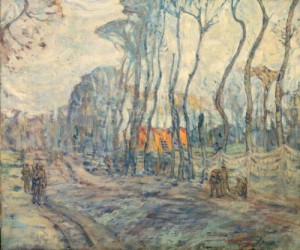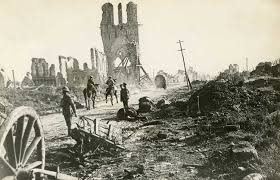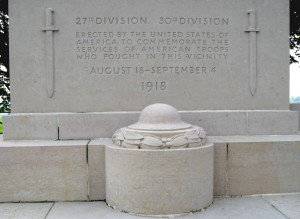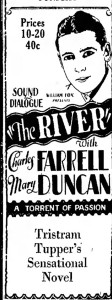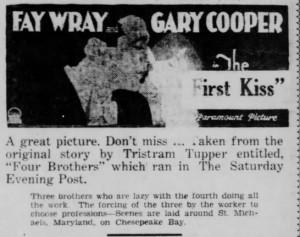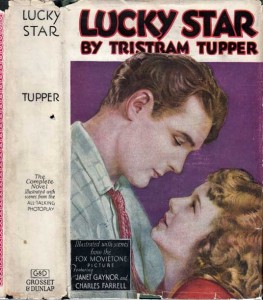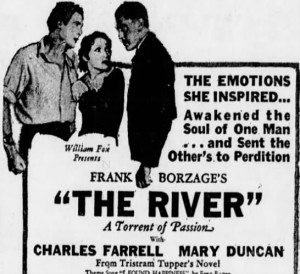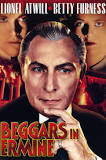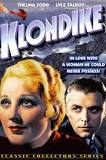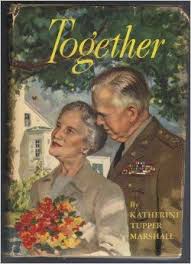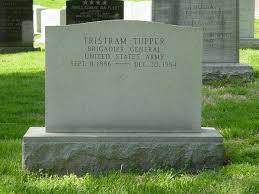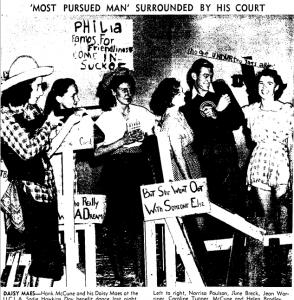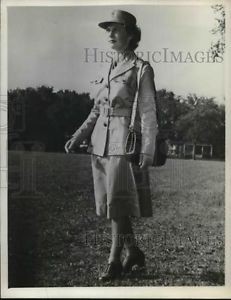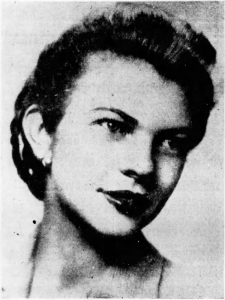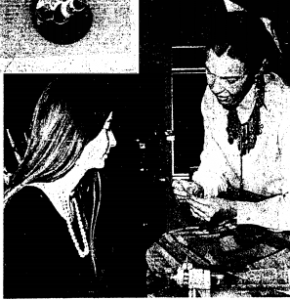Tristram Tupper (1885-1954) was the son of the Rev. Henry Allen Tupper, Jr., and of Marie Louise Pender. He was therefore the second cousin twice removed of my wife. He was also the brother-in-law of Gen. George Marshall. He was married twice: to Clara Caroline Tarbell (1885-1966), of whom was born Caroline Tarbell Tupper (1920-?) and Tristram Tupper, Jr. (1926-1999); and to Marion Cecile Ferrill (1908-1982. In ancestry.com there is listed a marriage to Ruth Reynolds (1892-?) of whom was born Ruth Reynolds Tupper (1910-?); but I cannot verify the existence of this marriage and child.
Tristram attended Phillips Academy and graduated from the New York Law School in 1912. He tried his hands at various occupations, none successfully, as he admitted.
In July 1917 Tristram married Clara Tarbell, the niece of the famous muckraking writer, Ida Tarbell.
Tristram in the Great War
John Singer Sargent
Study for
The Americans Are Coming
Widener Library
In 1916 he enlisted as private in the Army. He went to the Mexican border and then to France as the 7th Regiment, the Silk-Stocking Regiment, in which the young male members of New York Society served. As the 107th it sailed with Gen. John Francis Ryan’s 27th Division, fought in France, broke the Hindenburg Line.
A line in the Social Register didn’t mean much in the trenches
Private Vanderbilt and new French friends
or offer much protection from German shells.
The Fallen of the 107th
The monument to the 7th.
It portrays the fierceness of battle
and the results of battle.
Tupper was an Adjutant General to Gen. John Francis O’Ryan.
Gen. John Francis O’Ryan, Commander of the 27th
The staff. Tristram is fourth from right
On August 30, 1918 John Singer Sargent moved to the New York Division at Vierstraat Bridge near Ypres. It was at this time he did his studies for Gassed.
Tristram first encountered Sargent when Sargent was drawing General O’Ryan.
Gen. John Francis O’Ryan
by John Singer Sargent
Tristram met Sargent again in the trenches, a meeting Tristram wrote about in “Sargent’s Studio of Shellfire” in the New York Times, March 23, 1919.
John Singer Sargent, self-portrait
Tristram described the landscape: “this valley might truthfully be called the valley of the shadow of death.”
The maps showed neat rows of trenches.
But there were no trenches – nothing worthy of the name – merely shell holes and torn places in the earth surface where soldiers might escape enemy observation through the day if they lay flat on the ground and did not move. The enemy held the high ground in this sector, had held it since the valiant British Army plunged forward in the mud, and disappeared forever on its way to Passchendaele.
Paul Fussell in The Great War and Modern Memory describes how soldiers drowned slowly in the mud, and how the landscape was haunted by its names: The Valley of the Passion.
Vierstratt, by A. Y. Jackson, 1917
Later Tristram saw Sargent on the battlefield, searching for a dugout in which a soldier had drawn a picture. Then he saw him on a hill, watching he battle win which the Americans were pushing back the Germans at Vierstratt, Sargent had his umbrella and canvas and paints. But Sargent was not painting.
The reason was obvious – all the paintings of all the great galleries of the world can give no adequate impression of war. It is indescribable. You may read all the books in the libraries, you may look at all the paintings of the masters, and you will not get anything akin to the feeling caused by the sight of a man stumbling forward, wounded, with the dream of life fading from his eyes.
Ypres, 1918
The last time Tristram saw Sargent was at Ypres.
Where not a house had a roof and not a room four walls – a ruin more complete than Pompeii.
As he sat among the ruins of the Cathedral of Ypres, painting an arch under which a broken timber had jammed, he talked of art after the war: Artist would rise to take the place of those who had been killed, and as he talked a pigeon, perched high on the broken walls that were once the tower of the Cathedral of Ypres. Sargent pointed with a paint brush to the pigeon. “It’s in the heart of every living thing,” he said. “the thing that has brought the pigeon back to the cathedral tower where it used to live will bring men back to these ruined towns and cities. They will build again. Home has an irresistible power. Men and beast always return.”
_____________________________
_____________________-_
Tristram in Hollywood
After the War Tristram took up writing for a living: Novels and short stories and screen plays, first for silent movies and then for talkies. For fifteen years he wrote scenarios for Fox, Republic and Universal Pictures.
Adventuring, (The Saturday Evening Post Jan 27, Feb 3, Feb 10 1923
Four Brothers, (The Saturday Evening Post Apr 7 1928
The Language of the Angels, The Saturday Evening Post Jun 3, Jun 10 1922
The Magnolia Grove, The Saturday Evening Post Aug 3 1935
The Man Who Knew Nothing on Earth,
The World’s Greatest Stories Apr 1929
The Man Who Swam the Pacific, The American Magazine Jul 1937
Prelude to Summer, The American Magazine Aug 1936
The River, The Saturday Evening Post Nov 26, Dec 3, Dec 10 1927; (western)
A Storm at the Crossroads, The Saturday Evening Post Jun 16 1923
Three Episodes in the Life of Timothy Osborn, The Saturday Evening Post Apr 9 1927
Too Old to Be Spanked, The Saturday Evening Post Nov 2 1946
When the Bands Not Playing, The Mother’s Magazine Sep 1917
Tristram Goes to War Again
In 1939-41 Tristram was Public Relations Officer for Fort McClellan. There he met Marion Ferrill, who was chief nurse. In the Second World War he was a Brigadier General in charge of war correspondents. They were difficult to handle. In Ed Kennedy’s War we read
During the last days of Algiers a new general had arrived to take command of public relations in the Mediterranean Theater. He was the mouse-like Brigadier General Tristram Tupper from Hollywood, a scenario-writing brother-in-law of General George Marshall. Although his job naturally called for contact with correspondents, he went into concealment. Efforts to seek him out failed. When months went by without a sight of him, word spread that there was no General Tupper. After we were established in Italy he made a few furtive appearances. He excused his absence by saying he would be of more help to us by staying far away. He was right, for when he assumed personal supervision – as press arraignments for the invasion of southern France were made – the result has almost every correspondent howling. Assignments were made with the aid of charts, lists, timetables, and the drawing of straws. Tupper planned to send correspondents in on successive waves. Had not most of the correspondents scheduled to wait for the later waves found means to circumvent his program, they might not have gotten into France until the campaign was over.
Clara and Tristram separated in 1935. On August 6 1947 Clara divorced him on the grounds he stayed away from home and was seen with other women. He married Marion Ferrill, who started Marion Tuppers Moonglade Preserves.
Tristram retired from the Army in October 1945. With Arthur Love he set up the publishing firm of Tupper and Love. His big commercial success was his sister’s book about life with his brother-in-law, Gen. George Marshall.
Tristram died in 1954.
________________________
___________
The Tupper Children
These are my wife’s third cousins, once removed.
Sadie Hawkins Day at UCLA, 1939
Caroline is on the far right
Caroline Tupper (1920- ) enlisted in 1942 while she was at UCLA; she served in the WAC in the Pacific in WWII and again in Korea.
Caroline in her WAC uniform
She was in Army Intelligence in Hollandia, Leyte, and Manila.
Dr. Robert Overbeck, who had been at Johns Hopkins in geology and worked for a mining firm in the Philippines. His wife and son were in Manila. When the Japanese invaded, Richard Stevens Overbeck (1917-1972) , an engineer who had graduated from Loyola College and Columbia, volunteered to help construct the defenses of Corregidor. He was captured and survived the Bataan Death March.
Overbeck after rescue
The parents and son were interned. Richard was on a Japanese prison ship with 1800 Americans when it was torpedoes in October 1944 (Paul Fussell mentions this disaster). Only eight survived. Robert got on an abandoned Japanese lifeboat and managed to sail to China. He returned to the United States, was commissioned in Army Intelligence, and served in the Philippines.

Overbeck in uniform, 1945
There he met Caroline.
Caroline’s engagement photo
They were married on February 18, 1945 in the chapel at Fort Myer. They were divorced in 1948.
Caroline studied under a goldsmith and designed jewelry for Tiffany and other stores.
She was recalled in the Korean Conflict and served in the Army Security Agency.
Later Caroline taught jewelry in a public school.
Caroline Tupper. 1972
El Camino Real High School
Woodland Hills, California
The only mention of Tristram Tupper Jr. (1926-1999) I could locate is in connection with a traffic accident. In August 1948 he hit a seventy-five year old pedestrian who had to be taken to the hospital. This Tristram’s life was less eventful than that of his family.
